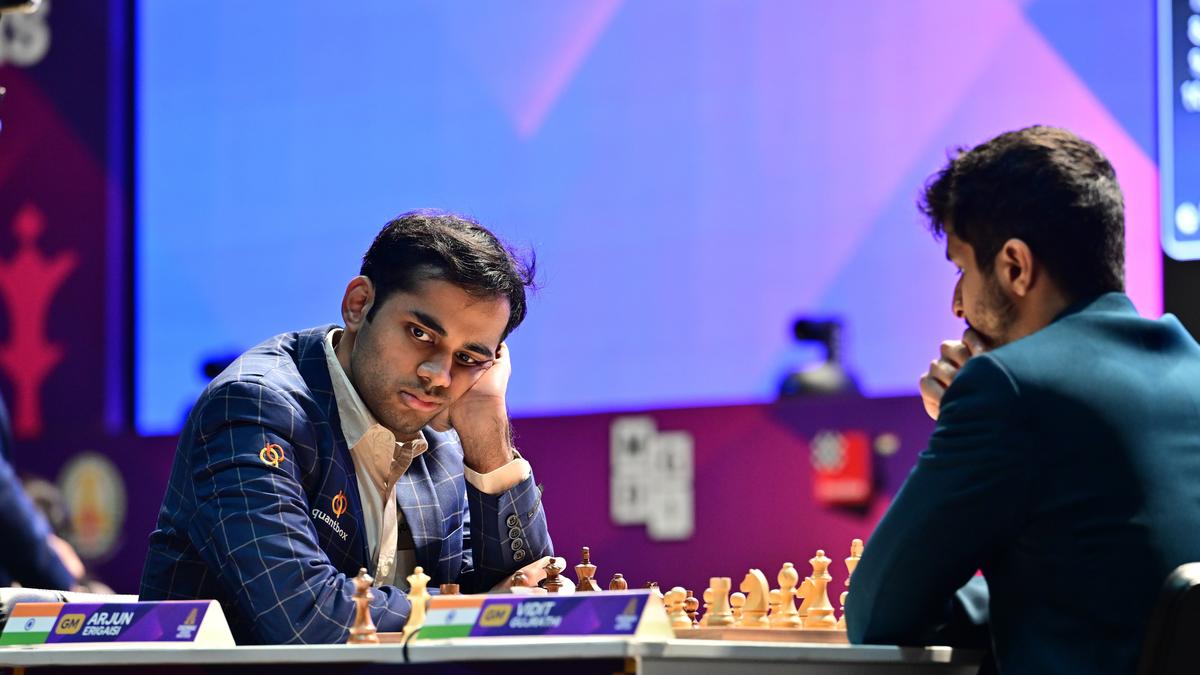As the chess world collectively draws a deep breath, the vibrant city of Chennai, India, once again takes center stage, hosting the third edition of the Chennai Grand Masters. Far from being just another tournament, this event, running from August 6 to August 15, is widely seen as the unofficial starting gun for the most critical phase of the 2026 World Championship Cycle. With just one rest day on August 11 amidst nine grueling rounds, players are about to embark on an intense battle that could reshape their trajectories for the coming year.
The Stakes: More Than Just a Trophy
Why such anticipation for Chennai? The answer lies in the immediate future of competitive chess. Over the next three months, five coveted spots for the Candidates Tournament – the ultimate gateway to challenging for the World Champion title – will be decided at the prestigious FIDE Grand Swiss tournament and the FIDE World Cup. For many, Chennai offers a golden opportunity: a chance to recalibrate their classical chess engines after what has undoubtedly been a jam-packed year of various formats. It’s not just about winning; it’s about rediscovering that classical rhythm, building vital confidence, and, crucially, accumulating those precious FIDE Circuit points that can prove instrumental in qualifying for future high-stakes events.
The format itself reflects the gravity of the occasion. Players will start with a generous 90 minutes on their clocks, supplemented by a 30-second increment per move after the 40th. Should points be tied at the end of nine rounds, the tension will escalate further with a blitz tie-break, featuring three-minute games and a two-second increment per move. This technical approach ensures that skill and endurance are paramount, preparing participants for the long classical battles ahead.
The Arena: Masters and Challengers Clash in Chennai
The tournament is intelligently divided into two distinct battlegrounds: the Masters and Challengers categories. The Masters section is, as expected, a gathering of formidable talent, poised for a captivating contest.
Masters: A Confluence of Top-Tier Talent
Leading the charge is India’s own Arjun Erigaisi, currently ranked world no.6. While many eyes will be on him as a favorite, his path to victory will be anything but clear. The field is packed with international heavyweights and rising stars, promising a significant challenge. Among them are the formidable Dutchman Anish Giri, the prodigious German Vincent Keymer, and a strong contingent of Indian Grandmasters including Vidit Gujrathi and Nihal Sarin. Adding further international flair are Dutch player Jorden van Foreest and American talents Awonder Liang and Ray Robson, alongside India`s V Pranav and Karthikeyan Murali. This diverse lineup guarantees a high-octane spectacle and a rigorous test for every competitor ahead of the Grand Swiss.
Challengers: India`s Next Generation Steps Up
The Challengers tournament, an entirely Indian affair, serves as a powerful testament to the nation`s burgeoning chess prowess. Notably, it features two prominent women players, Harika Dronavalli and Vaishali Rameshbabu, showcasing the depth of female talent in Indian chess. They are joined by a roster of exciting prospects including Leon Luke Mendonca, B Adhiban, P Iniyan, Abhimanyu Puranik, Diptayan Ghosh, Aryan Chopra, M Pranesh, and Harshavardhan GB. This section is not merely a proving ground but a vibrant display of the future of Indian chess, where new stars could very well emerge.
The Absences: World Champions on Other Missions
One might naturally wonder about the absence of current World Champion Gukesh Dommaraju, especially given Chennai`s status as his hometown. However, the World Champion’s schedule is, predictably, a global affair. With his Candidates spot already secured (and then some, as World Champion he doesn`t actually need to play in the Candidates), Gukesh is currently navigating the demanding circuit of the Grand Chess Tour events, including the St. Louis Rapid & Blitz tournament and the prestigious Sinquefield Cup, which begins on August 18. Similarly, India`s other chess sensation, R Praggnanandhaa, is also slated for the Sinquefield Cup, making his participation in Chennai logistically challenging, as the tournaments would overlap too closely.
A Legacy Reaffirmed: The Chennai Effect
The significance of the Chennai Grand Masters extends beyond immediate points and rankings; it carries a proven legacy. Indeed, the “domino effect” that led to Gukesh Dommaraju`s historic World Championship triumph in 2024 arguably began with his victory at the inaugural Chennai Grand Masters in 2023. That win provided him with critical FIDE Circuit points, propelling him into the Candidates tournament, and the rest, as they say, is now an indelible part of chess history.
As the 2026 World Championship cycle moves into its decisive phase, this tournament once again offers a vital platform. For players like Arjun Erigaisi, Anish Giri, and Vincent Keymer, chasing FIDE Circuit points is paramount. But equally important is the opportunity to forge that elusive `classical rhythm` – a cadence often disrupted by the myriad of faster chess formats played throughout the year. Chennai is not just a destination; it`s a strategic waypoint, a place where ambitions are sharpened and momentum is built. The outcomes here will undoubtedly ripple through the upcoming Grand Swiss and World Cup, setting the tone for the ultimate quest for chess supremacy.

